Abstract
Ventilation was studied during wakefulness and sleep in six healthy humans in normoxia (mean barometric pressure (PB) = 740 torr), and in hypobaric hypoxia (PB = 455 torr). Hypoxia caused hyperventilation and hypocapnic alkalosis (delta Pa,CO2 = -7 torr) during wakefulness and in all sleep states. Periodic breathing was the predominant pattern of breathing in all stages of non-rapid eye movement (non-r.e.m.) sleep in hypoxia, but was rarely observed during wakefulness or r.e.m. sleep. Periodic breathing was composed of repetitive oscillations of reproducible cycle length characterized by clusters of breaths with augmented inspiratory effort (VT/TI) and highly variable distribution of breath-to-breath minute ventilation (VE) and tidal volume (VT), which alternated regularly with prolongations of the expiratory pause of the last breath of each cluster (apnea duration = 5-18 sec). Hypoxia-induced periodic breathing was eliminated by: (a) acute restoration of normoxia coincident with a 3-6 torr increase in Pa,CO2; and (b) augmented FI,CO2 (at constant arterial oxygen saturation) which rapidly and reversibly eliminated apneas and stabilized breathing pattern with a less than 2 torr increase in Pa,CO2. If hypocapnia was prevented (by augmented FI,CO2) during acute induction of hypoxia in non-r.e.m. sleep, periodic breathing was also prevented. We propose that the genesis of hypoxia-induced periodic breathing requires the combination of hypoxia and hypocapnia. Periodicity results from oscillations in CO2 about a CO2-apnea threshold whose functional expression is critically linked to sleep state.
Full text
PDF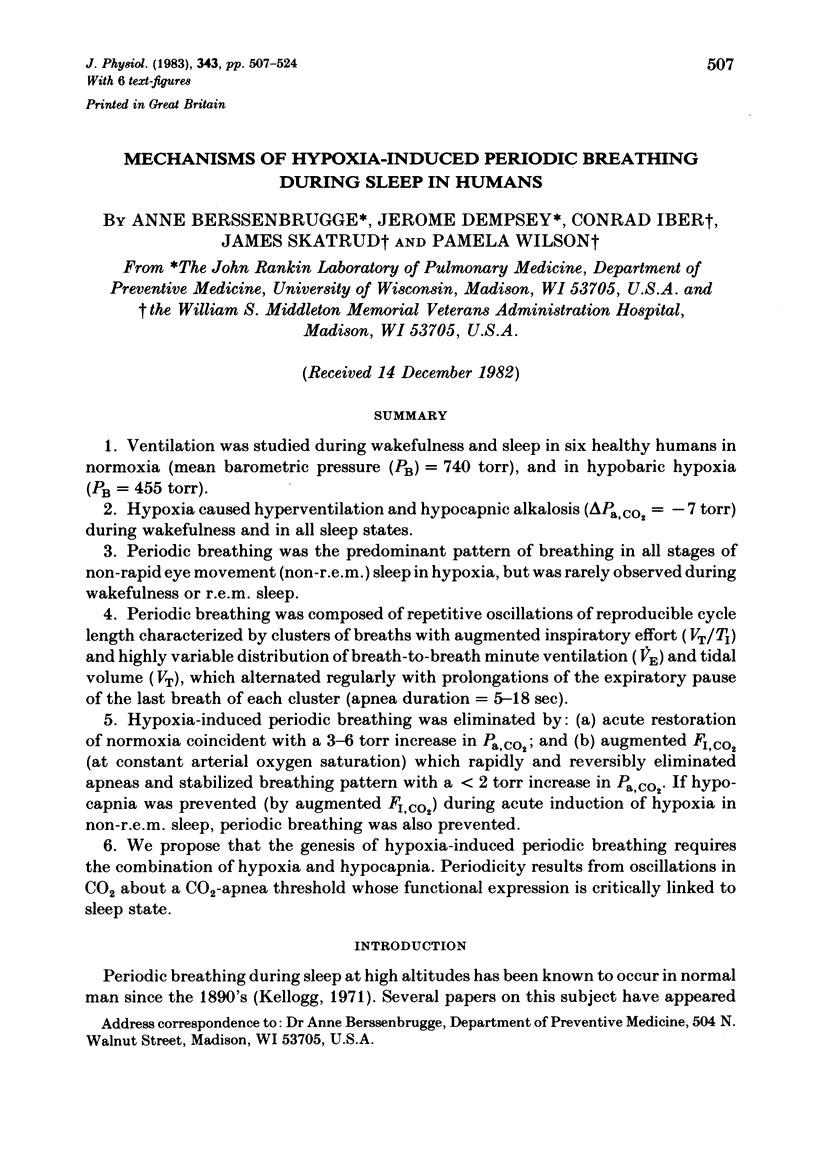
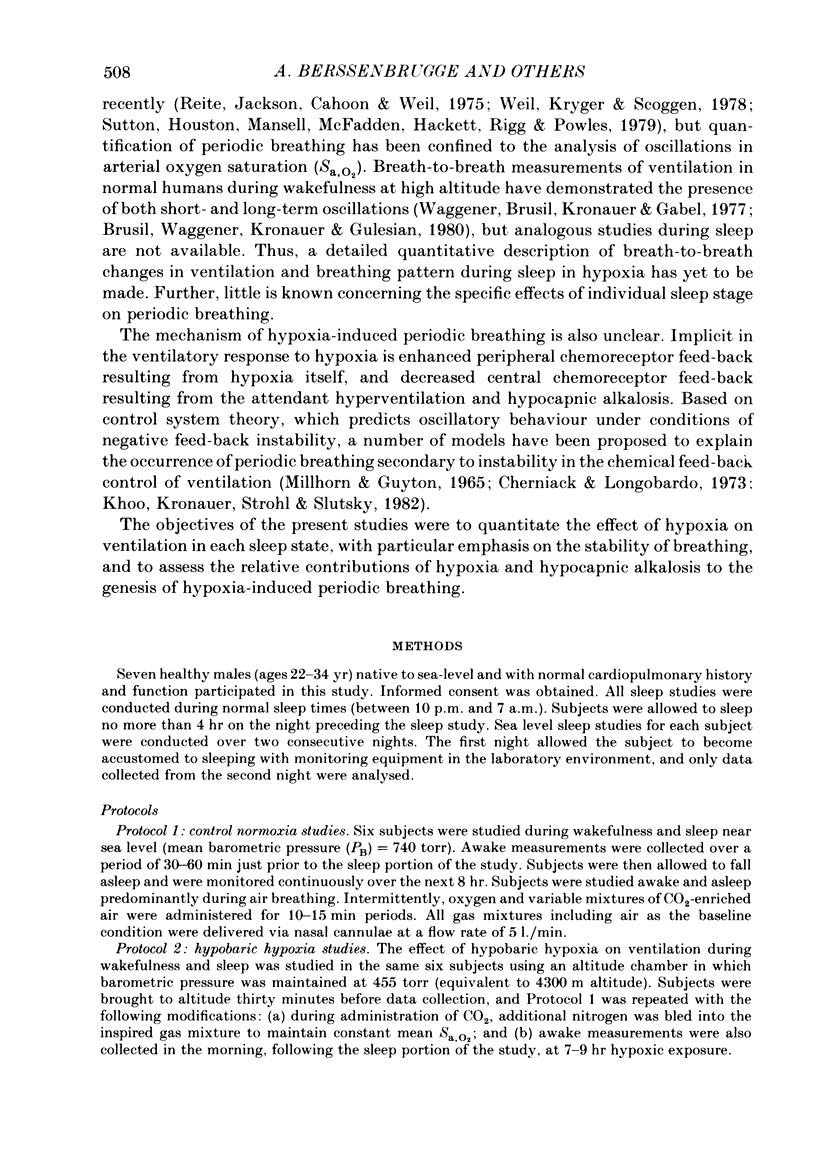
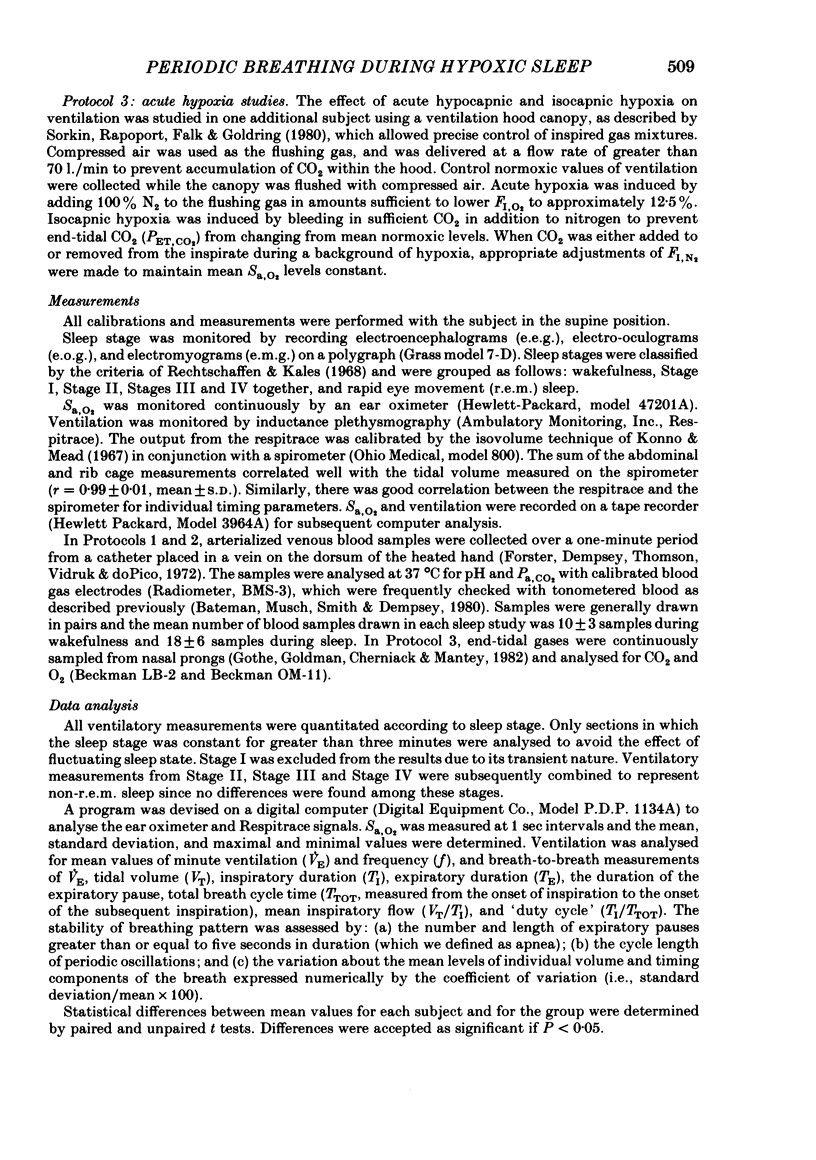
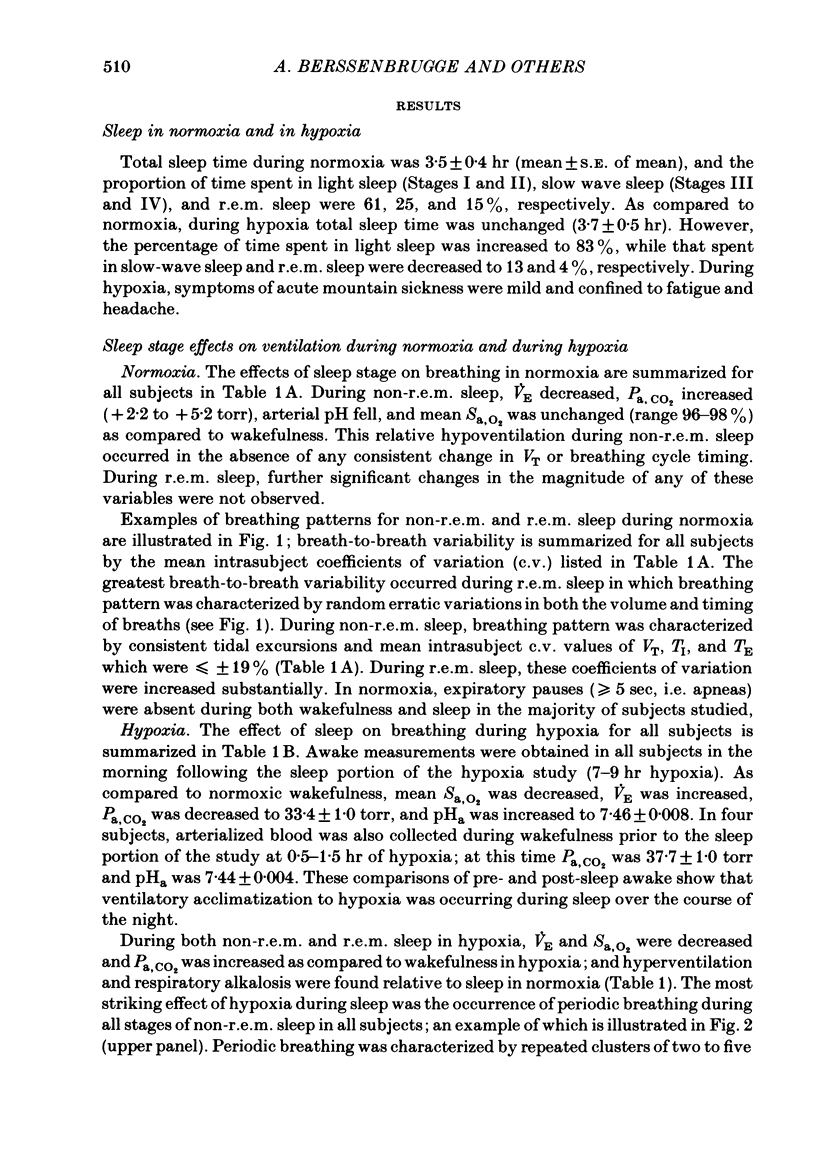
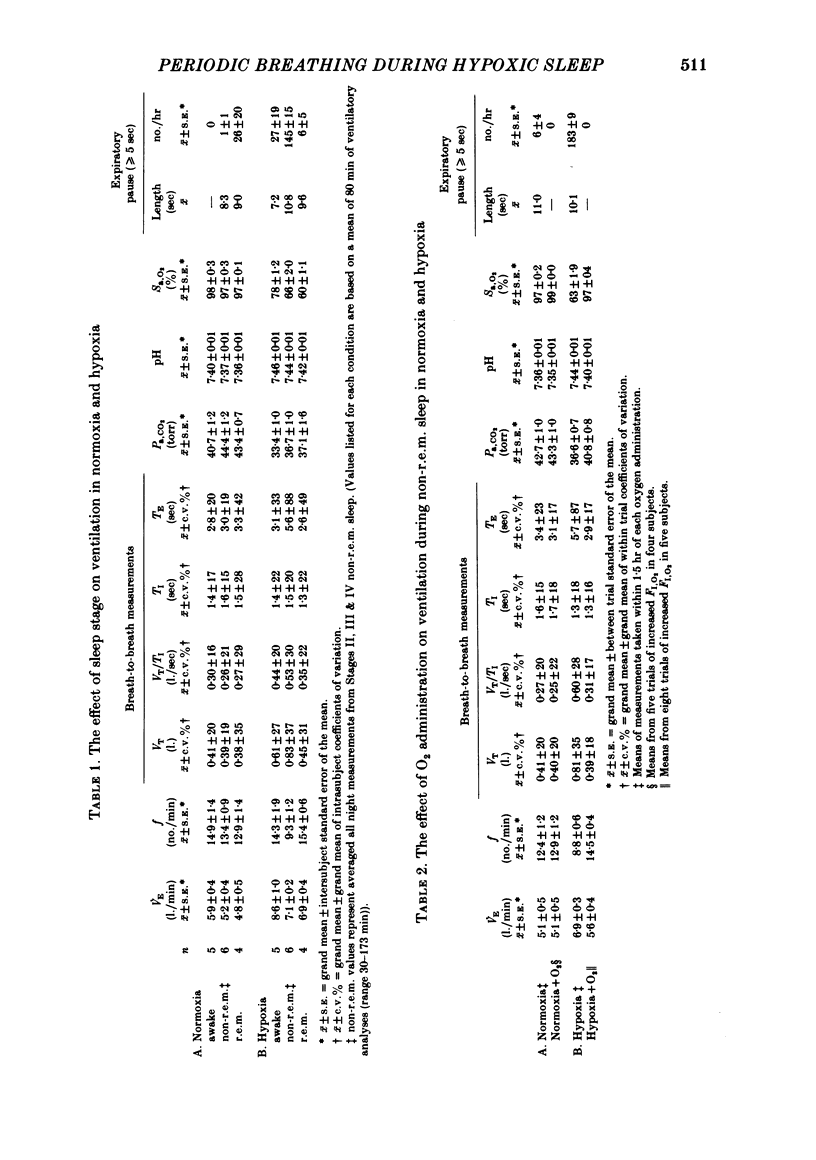
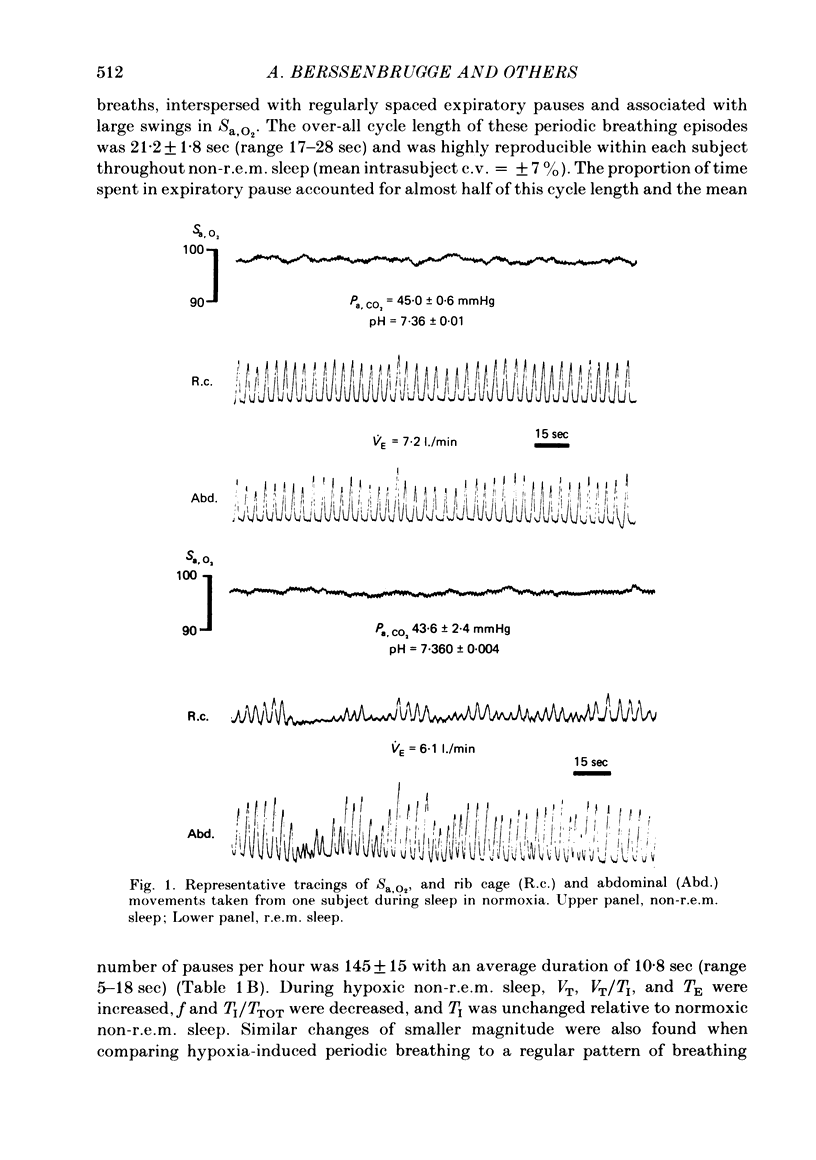
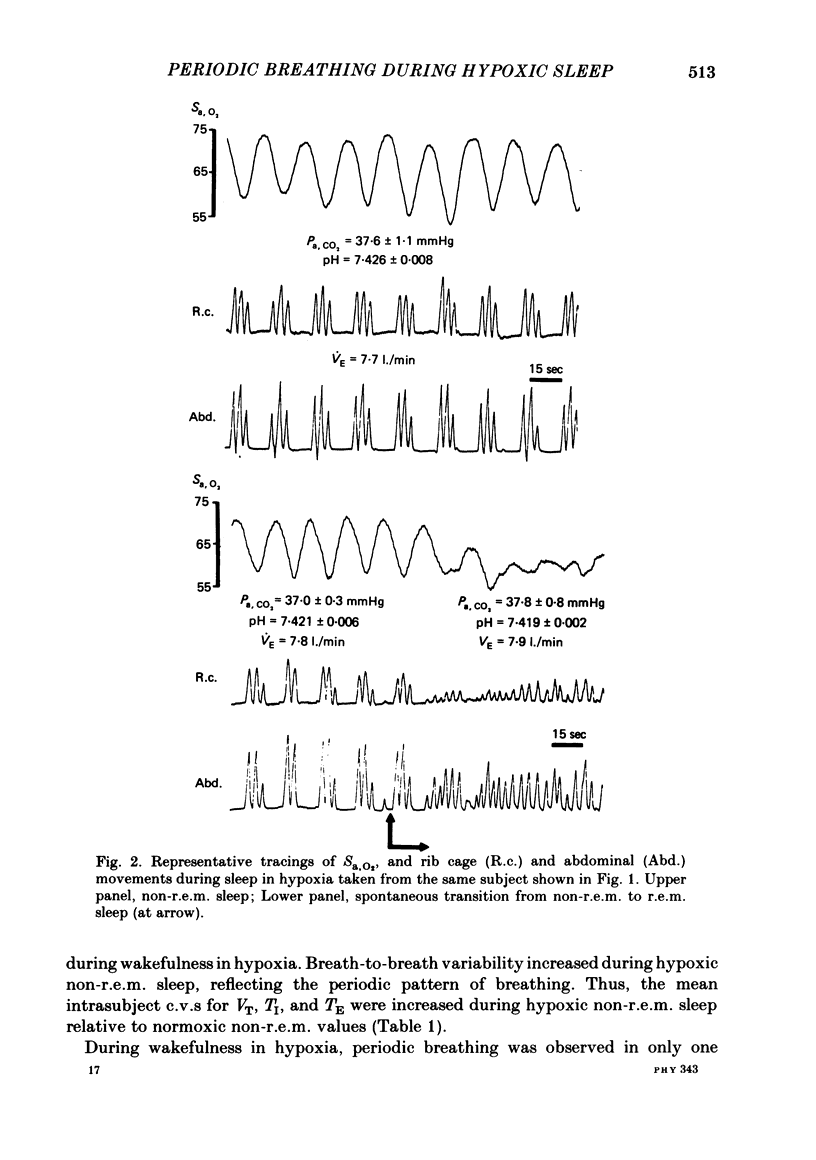
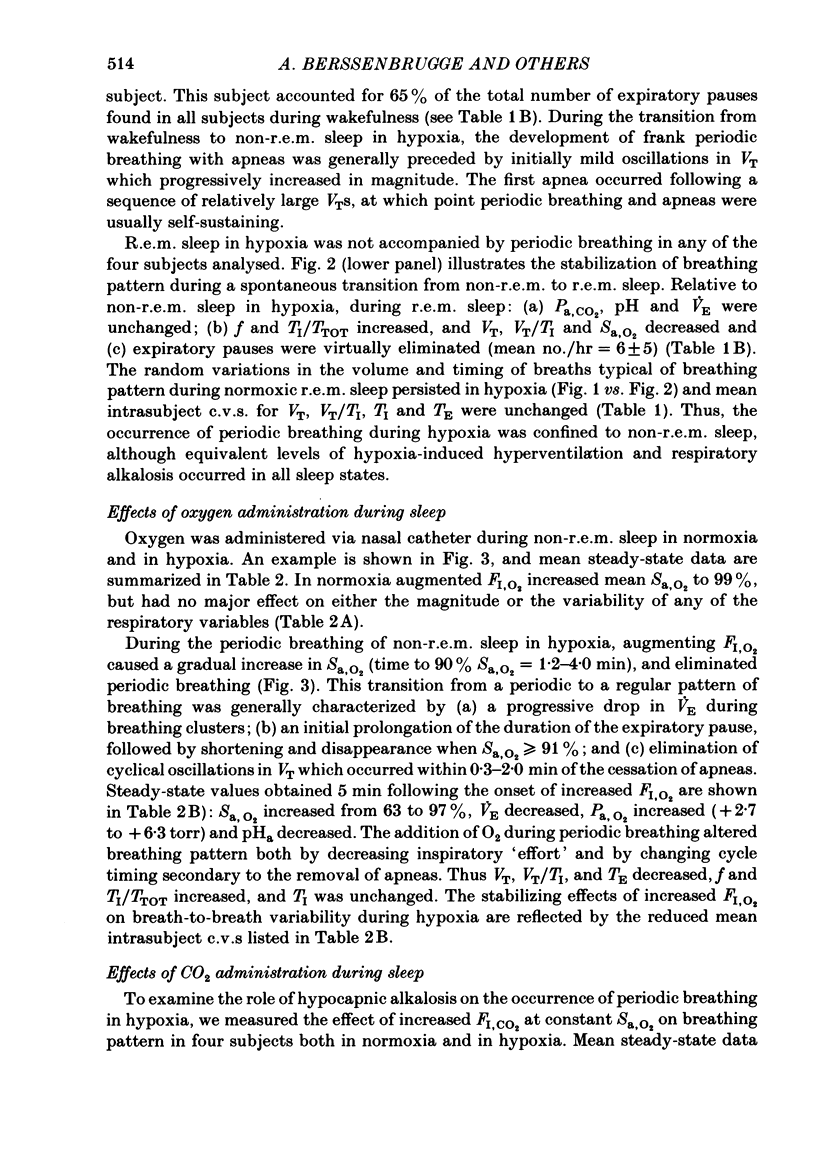
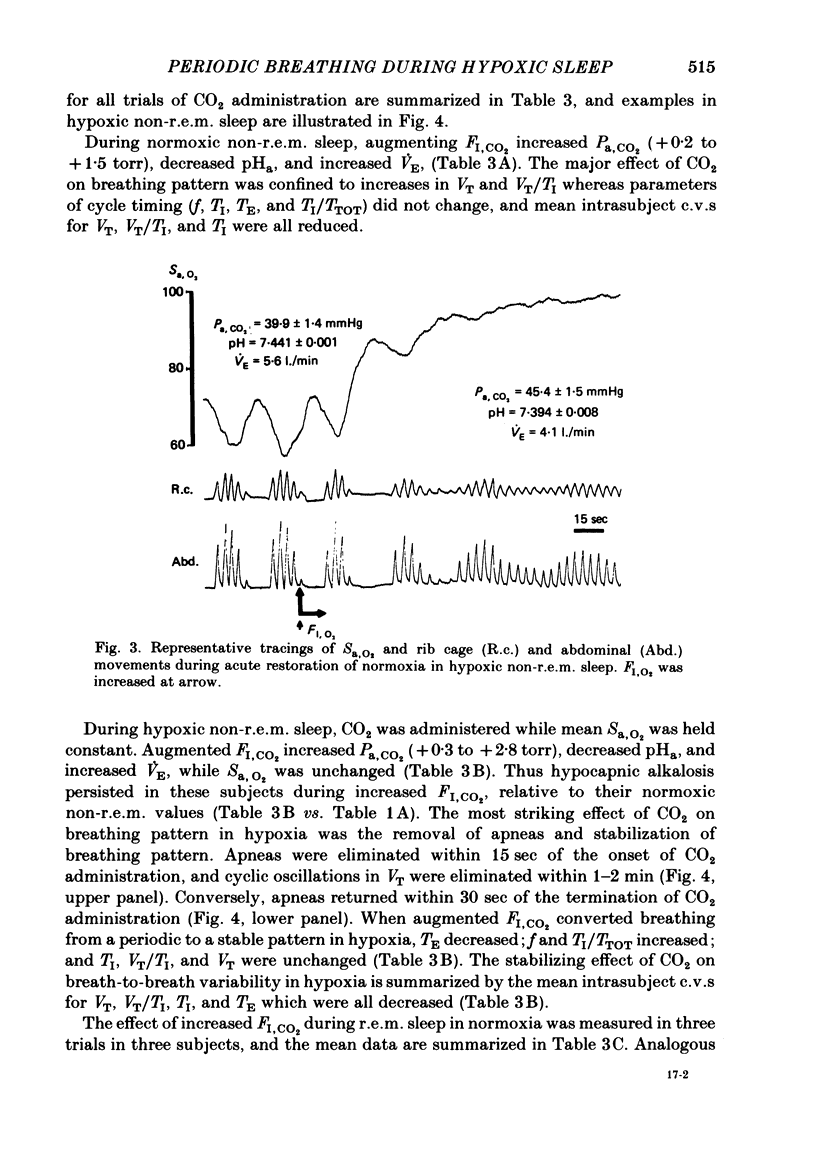
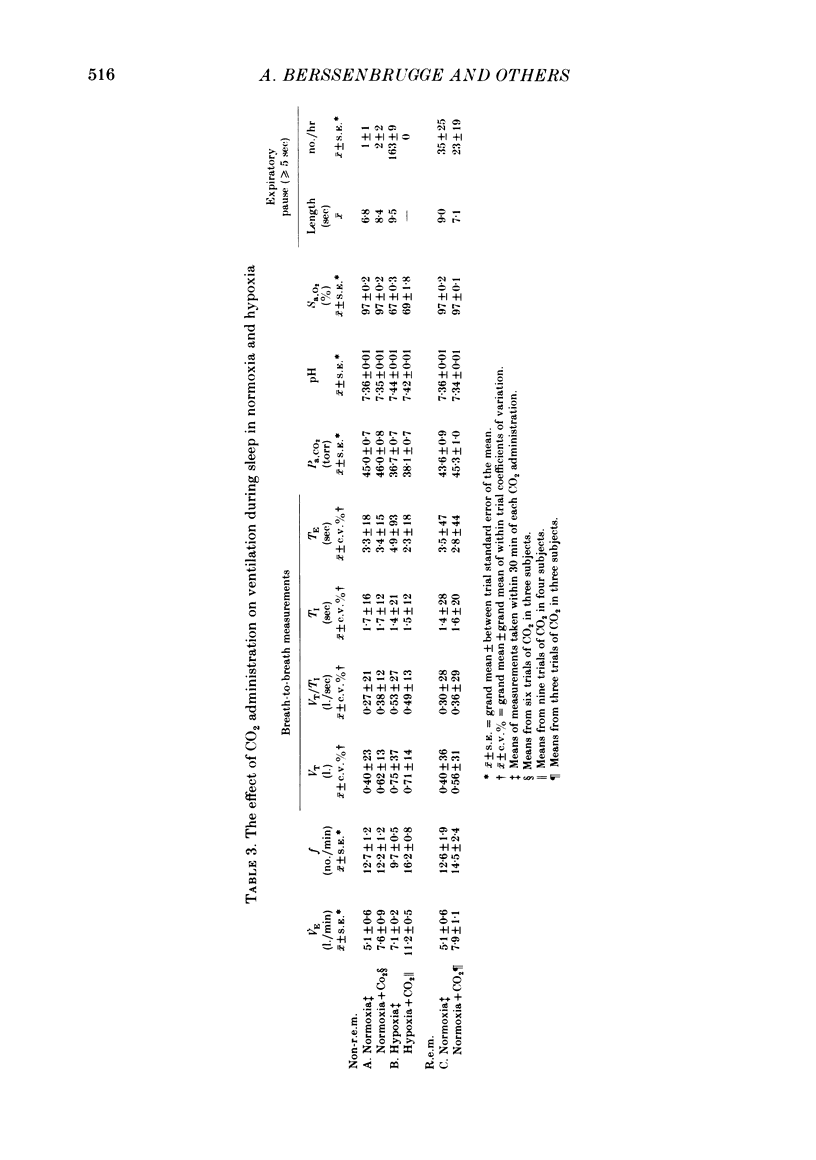
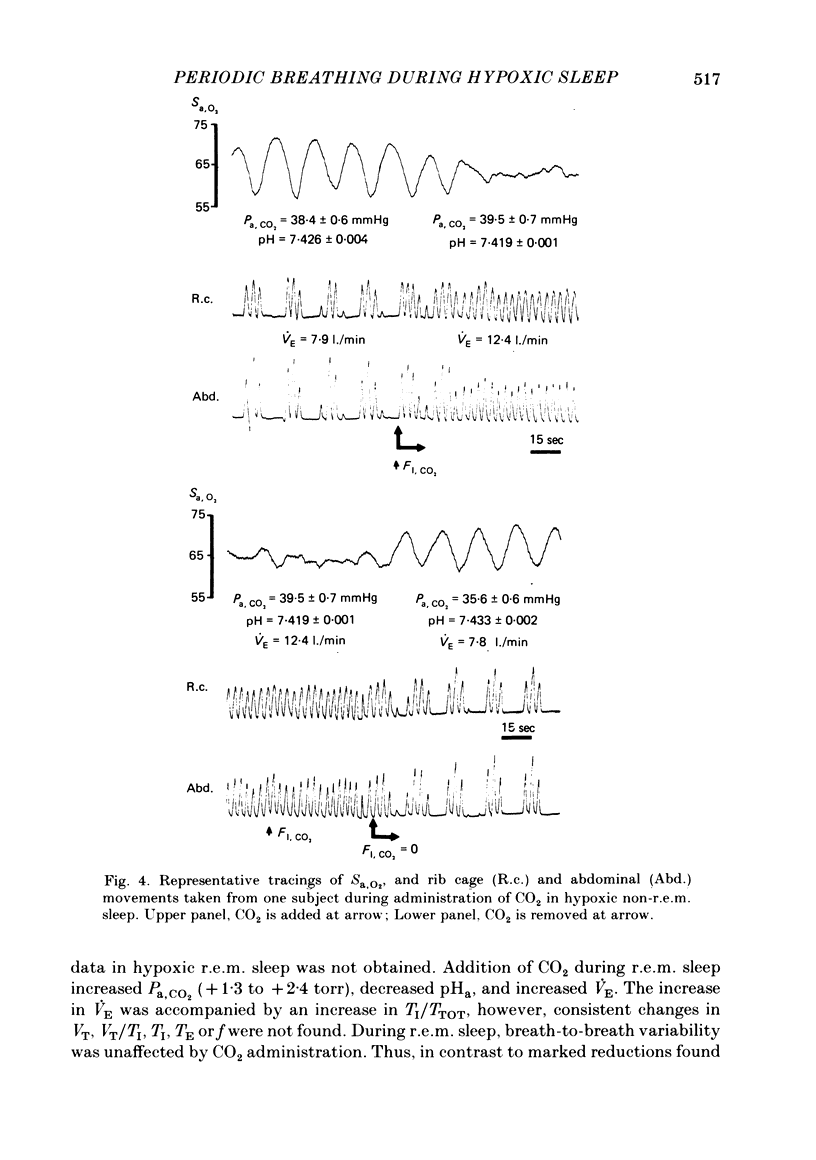

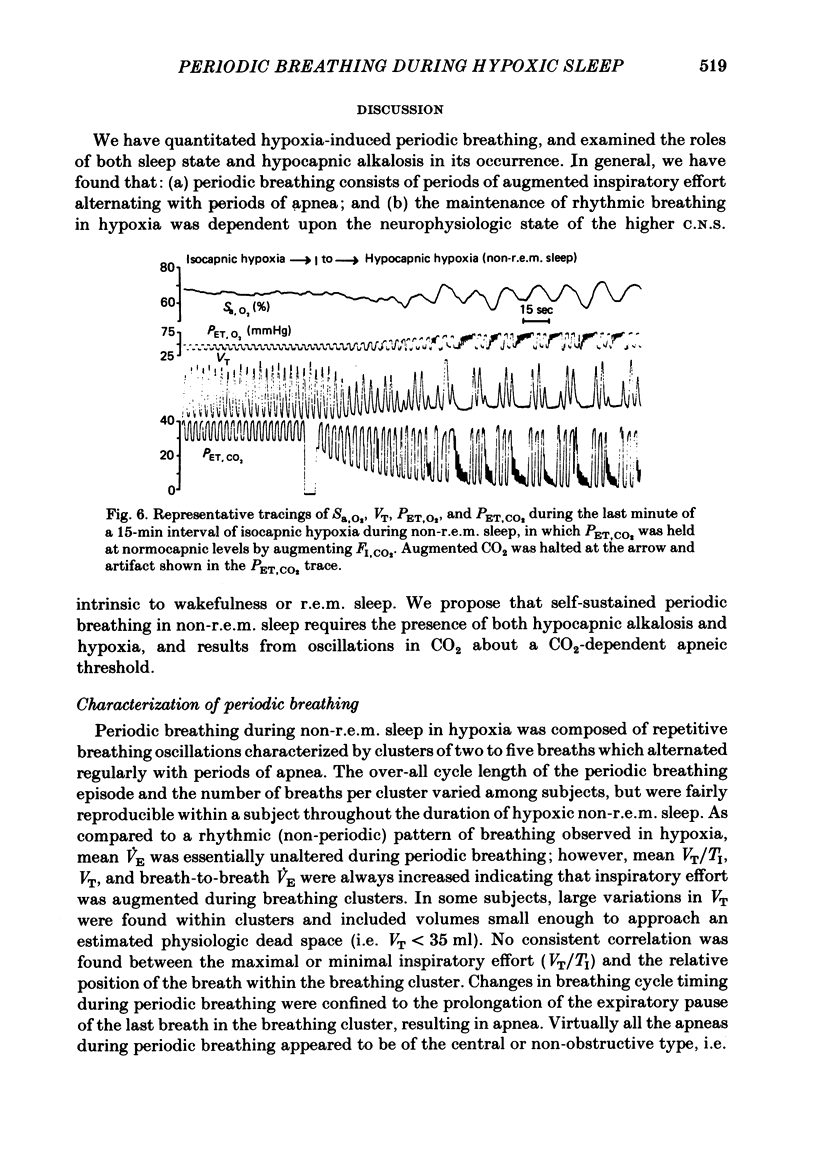
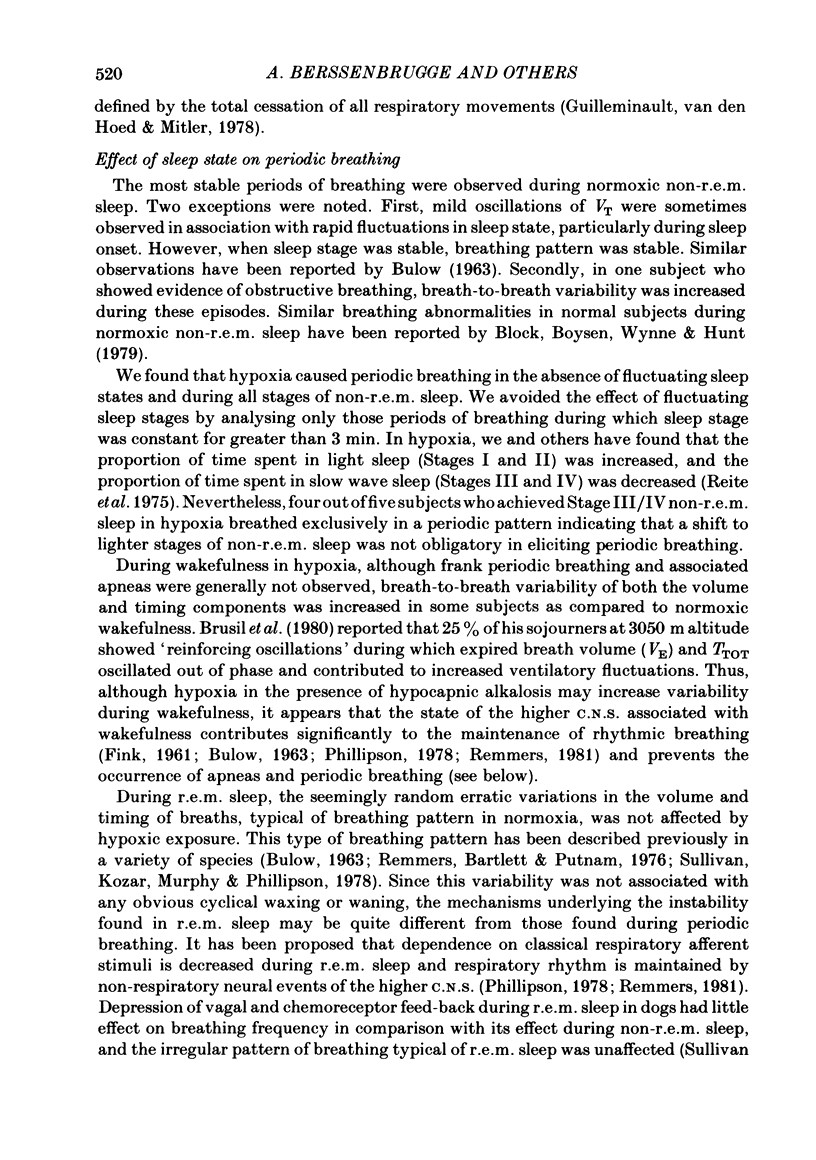
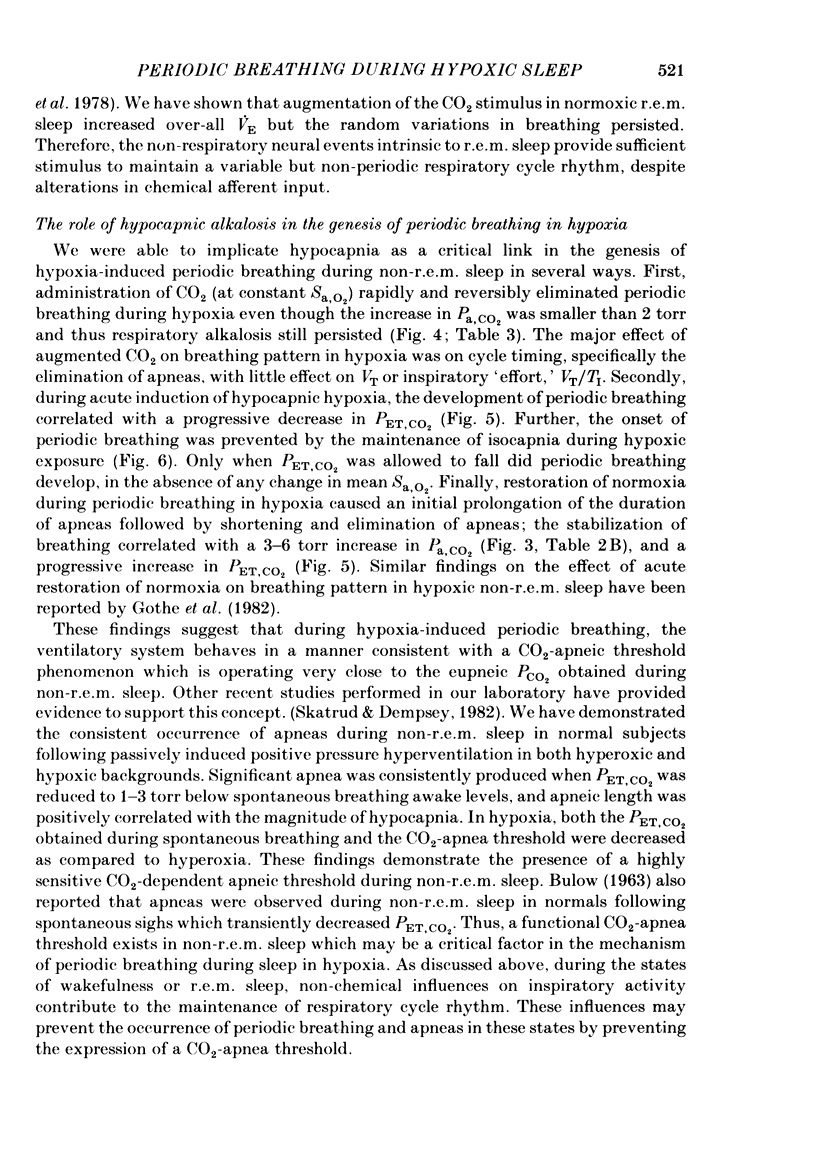
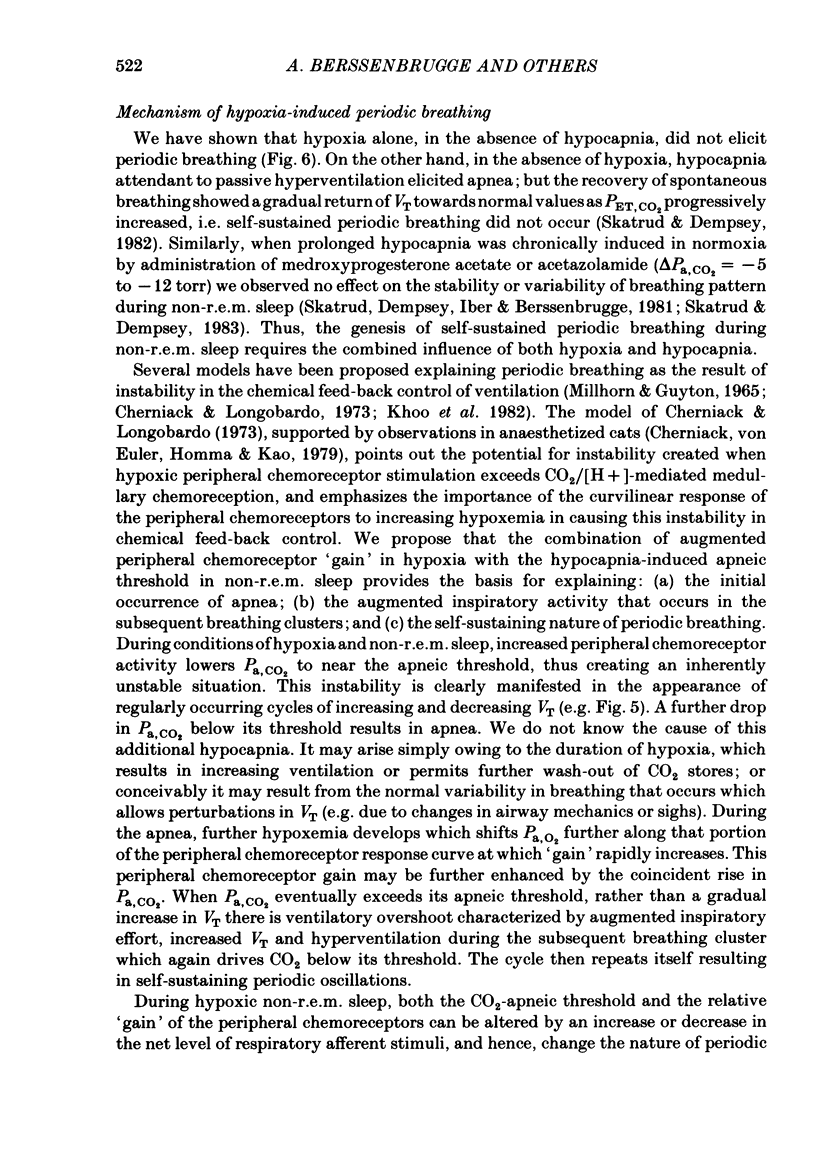
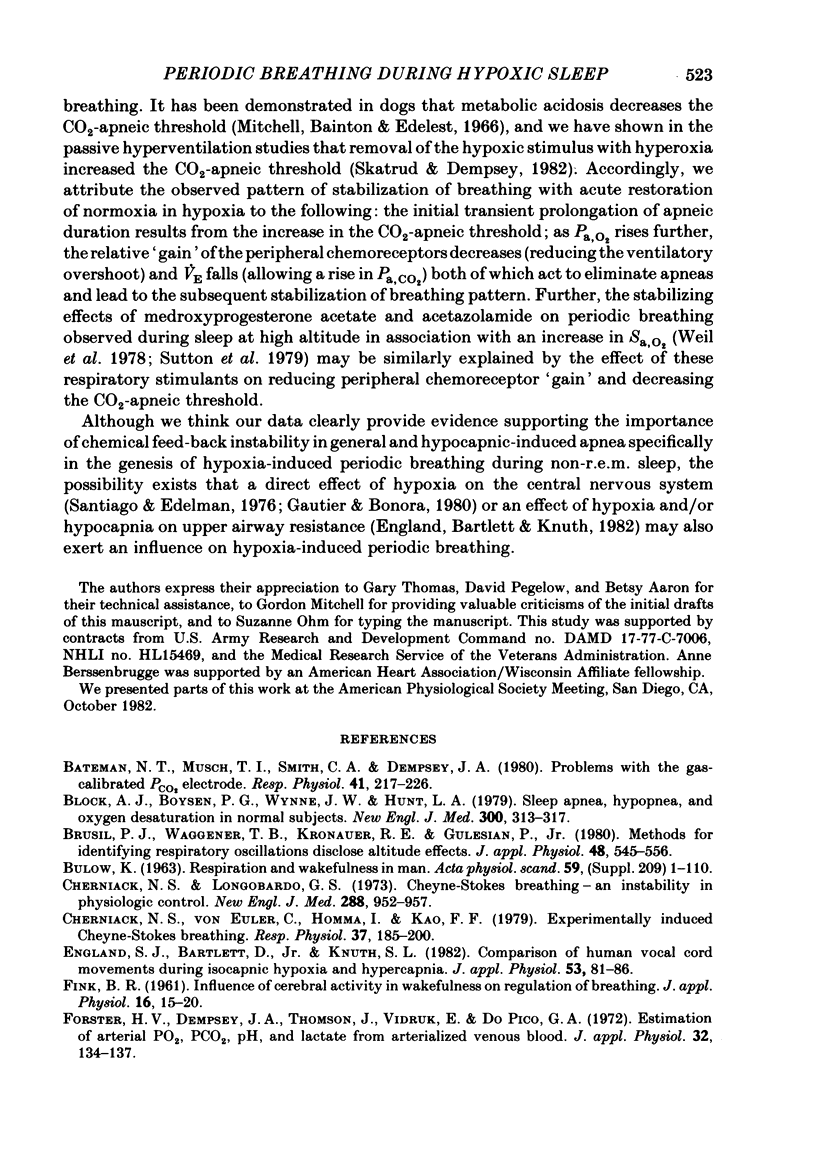
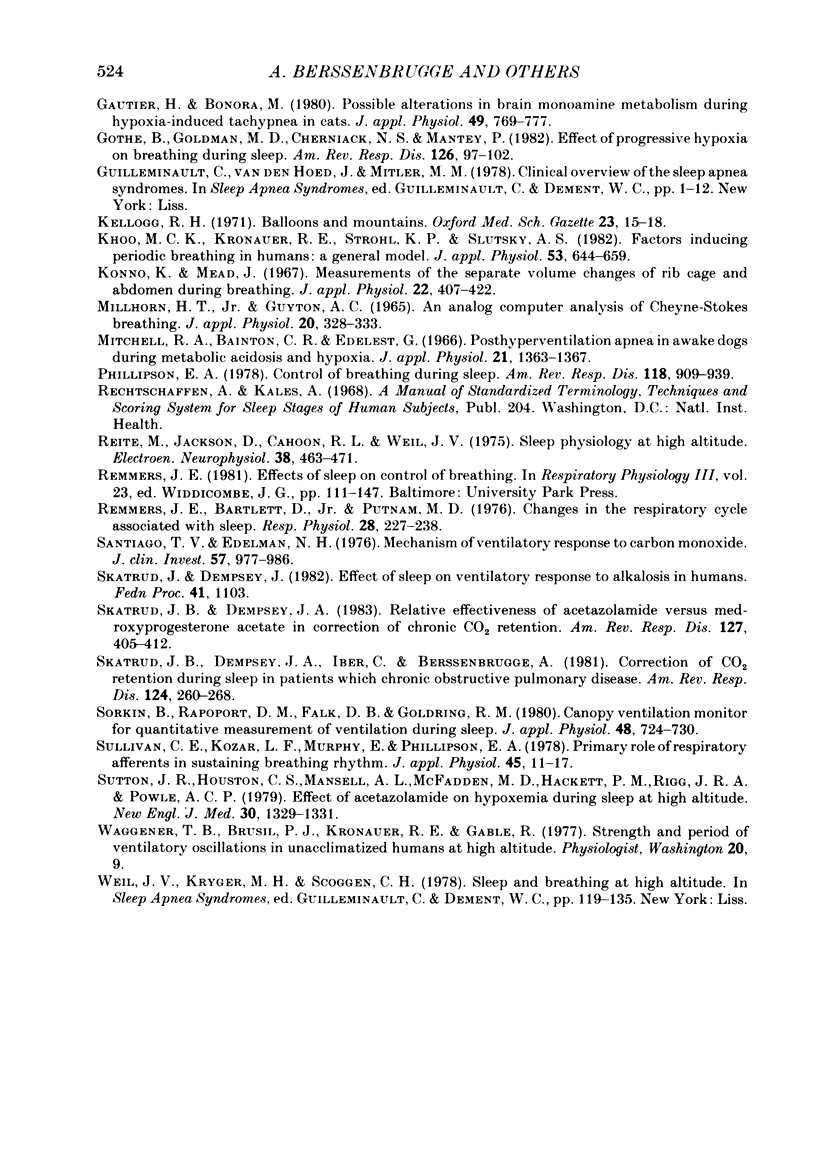
Selected References
These references are in PubMed. This may not be the complete list of references from this article.
- BULOW K. Respiration and wakefulness in man. Acta Physiol Scand Suppl. 1963;209:1–110. [PubMed] [Google Scholar]
- Bateman N. T., Musch T. I., Smith C. A., Dempsey J. A. Problems with the gas-calibrated PCO2 electrode. Respir Physiol. 1980 Aug;41(2):217–226. doi: 10.1016/0034-5687(80)90054-7. [DOI] [PubMed] [Google Scholar]
- Brusil P. J., Waggener T. B., Kronauer R. E., Gulesian P., Jr Methods for identifying respiratory oscillations disclose altitude effects. J Appl Physiol Respir Environ Exerc Physiol. 1980 Mar;48(3):545–556. doi: 10.1152/jappl.1980.48.3.545. [DOI] [PubMed] [Google Scholar]
- Cherniack N. S., Longobardo G. S. Cheyne-Stokes breathing. An instability in physiologic control. N Engl J Med. 1973 May 3;288(18):952–957. doi: 10.1056/NEJM197305032881810. [DOI] [PubMed] [Google Scholar]
- Cherniack N. S., von Euler C., Homma I., Kao F. F. Experimentally induced Cheyne-Stokes breathing. Respir Physiol. 1979 Jul;37(2):185–200. doi: 10.1016/0034-5687(79)90070-7. [DOI] [PubMed] [Google Scholar]
- England S. J., Bartlett D., Jr, Knuth S. L. Comparison of human vocal cord movements during isocapnic hypoxia and hypercapnia. J Appl Physiol Respir Environ Exerc Physiol. 1982 Jul;53(1):81–86. doi: 10.1152/jappl.1982.53.1.81. [DOI] [PubMed] [Google Scholar]
- FINK B. R. Influence of cerebral activity in wakefulness on regulation of breathing. J Appl Physiol. 1961 Jan;16:15–20. doi: 10.1152/jappl.1961.16.1.15. [DOI] [PubMed] [Google Scholar]
- Forster H. V., Dempsey J. A., Thomson J., Vidruk E., DoPico G. A. Estimation of arterial PO2, PCO2, pH, and lactate from arterialized venous blood. J Appl Physiol. 1972 Jan;32(1):134–137. doi: 10.1152/jappl.1972.32.1.134. [DOI] [PubMed] [Google Scholar]
- Gautier H., Bonora M. Possible alterations in brain monoamine metabolism during hypoxia-induced tachypnea in cats. J Appl Physiol Respir Environ Exerc Physiol. 1980 Nov;49(5):769–777. doi: 10.1152/jappl.1980.49.5.769. [DOI] [PubMed] [Google Scholar]
- Gothe B., Goldman M. D., Cherniack N. S., Mantey P. Effect of progressive hypoxia on breathing during sleep. Am Rev Respir Dis. 1982 Jul;126(1):97–102. doi: 10.1164/arrd.1982.126.1.97. [DOI] [PubMed] [Google Scholar]
- Khoo M. C., Kronauer R. E., Strohl K. P., Slutsky A. S. Factors inducing periodic breathing in humans: a general model. J Appl Physiol Respir Environ Exerc Physiol. 1982 Sep;53(3):644–659. doi: 10.1152/jappl.1982.53.3.644. [DOI] [PubMed] [Google Scholar]
- Konno K., Mead J. Measurement of the separate volume changes of rib cage and abdomen during breathing. J Appl Physiol. 1967 Mar;22(3):407–422. doi: 10.1152/jappl.1967.22.3.407. [DOI] [PubMed] [Google Scholar]
- Mitchell R. A., Bainton C. R., Edelist G. Posthyperventilation apnea in awake dogs during metabolic acidosis and hypoxia. J Appl Physiol. 1966 Jul;21(4):1363–1367. doi: 10.1152/jappl.1966.21.4.1363. [DOI] [PubMed] [Google Scholar]
- Phillipson E. A. Control of breathing during sleep. Am Rev Respir Dis. 1978 Nov;118(5):909–939. doi: 10.1164/arrd.1978.118.5.909. [DOI] [PubMed] [Google Scholar]
- Reichlin S. The prolactinoma problem. N Engl J Med. 1979 Feb 8;300(6):313–315. doi: 10.1056/NEJM197902083000612. [DOI] [PubMed] [Google Scholar]
- Reite M., Jackson D., Cahoon R. L., Weil J. V. Sleep physiology at high altitude. Electroencephalogr Clin Neurophysiol. 1975 May;38(5):463–471. doi: 10.1016/0013-4694(75)90188-1. [DOI] [PubMed] [Google Scholar]
- Remmers J. E., Bartlett D., Jr, Putnam M. D. Changes in the respiratory cycle associated with sleep. Respir Physiol. 1976 Nov;28(2):227–238. doi: 10.1016/0034-5687(76)90041-4. [DOI] [PubMed] [Google Scholar]
- Remmers J. E. Effects of sleep on control of breathing. Int Rev Physiol. 1981;23:111–147. [PubMed] [Google Scholar]
- Skatrud J. B., Dempsey J. A., Iber C., Berssenbrugge A. Correction of CO2 retention during sleep in patients with chronic obstructive pulmonary diseases. Am Rev Respir Dis. 1981 Sep;124(3):260–268. doi: 10.1164/arrd.1981.124.3.260. [DOI] [PubMed] [Google Scholar]
- Skatrud J. B., Dempsey J. A. Relative effectiveness of acetazolamide versus medroxyprogesterone acetate in correction of chronic carbon dioxide retention. Am Rev Respir Dis. 1983 Apr;127(4):405–412. doi: 10.1164/arrd.1983.127.4.405. [DOI] [PubMed] [Google Scholar]
- Sorkin B., Rapoport D. M., Falk D. B., Goldring R. M. Canopy ventilation monitor for quantitative measurement of ventilation during sleep. J Appl Physiol Respir Environ Exerc Physiol. 1980 Apr;48(4):724–730. doi: 10.1152/jappl.1980.48.4.724. [DOI] [PubMed] [Google Scholar]
- Sullivan C. E., Kozar L. F., Murphy E., Phillipson E. A. Primary role of respiratory afferents in sustaining breathing rhythm. J Appl Physiol Respir Environ Exerc Physiol. 1978 Jul;45(1):11–17. doi: 10.1152/jappl.1978.45.1.11. [DOI] [PubMed] [Google Scholar]
- Sutton J. R., Houston C. S., Mansell A. L., McFadden M. D., Hackett P. M., Rigg J. R., Powles A. C. Effect of acetazolamide on hypoxemia during sleep at high altitude. N Engl J Med. 1979 Dec 13;301(24):1329–1331. doi: 10.1056/NEJM197912133012406. [DOI] [PubMed] [Google Scholar]


